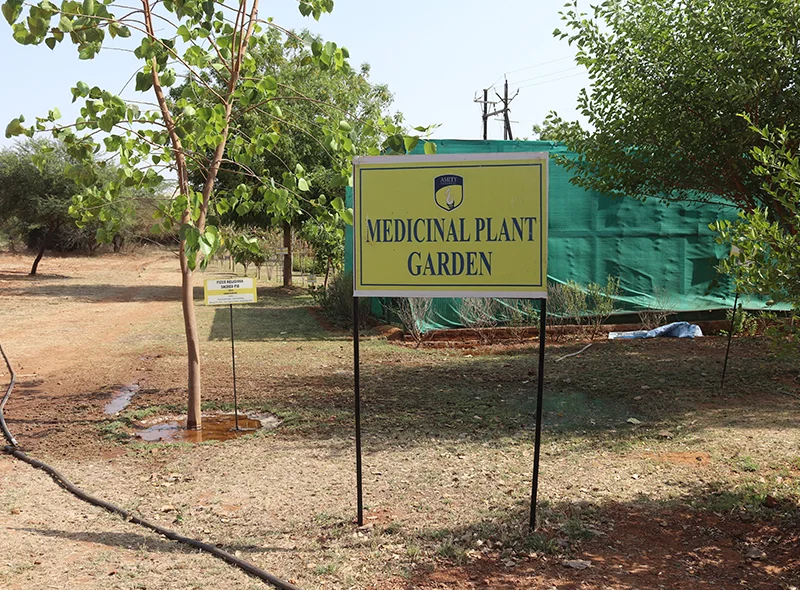Infrastructure
The Central Instruments Facility (CIF)
The Central Instruments Facility (CIF) of the University is the nucleus of cutting-edge research and innovation, which facilitates and supports pioneering research endeavours by offering access to state-of-the-art instrumentation, technical expertise, and infrastructure. The facility has an impressive collection of specialized instruments/equipment’s such as High-Performance Liquid Chromatography (HPLC) (Shimadzu), Double beam UV- Visible Spectroscopy, Refrigerated centrifuge (Remi), Millipore Water Purifier system (Merck), etc, Triple distillation assembly, BOD Incubator (COSLAB INDIA), Paper Vertical system (EPS BioSolutions). CIF caters to the needs of researchers across fields and encourages the convergence of ideas and methodologies. It empowers the scientists and students to conduct advanced experiments and analyses. CIF also serves as an educational resource, offering training programs and workshops to familiarize users with cutting-edge technologies, enhancing their scientific skill sets. CIF is an indispensable resource empowering scientists and students to explore, discover, and transform the landscape of scientific knowledge.

Machine Room
The machine room is the technological heart of the university serving as a pivotal space where theory meets practice. It embodies a fusion of cutting-edge machinery, advanced tools, and expertise pivotal to pharmaceutical research, experimentation, and production. Machine room provides students, researchers, and faculty with a dynamic environment conducive to hands-on learning, innovation, and the development of pharmaceutical formulations. This space plays a crucial role in translating theoretical knowledge into practical applications, bridging the gap between academia and industry standards.
The machine room is equipped with a diverse range of state-of-the-art machinery and instruments, including Automated 12 station tablet punching machine (Karnavati, Minipress II), Digital Rheometer (Brookfield), All purpose equipment, Double Cone Blender (COSLAB INDIA). Table coating machine (COSLAB INDIA), Ampoule filling & sealing machine (COSLAB INDIA), Microprocessor Tablet Dissolution Test Apparatus (Esico International), Rotational Viscometer, Ultrasonicator, Liquid filling machine, Tray dryer etc.

The facility of Machine provides students with practical exposure to the operation and handling of pharmaceutical machinery, fostering skill development and proficiency. It facilitates the research endeavors by enabling the formulation, testing, and analysis of novel pharmaceutical products. It acts as a collaborative space for faculty and students to work on research projects and industry collaborations. It is as a beacon of innovation and precision, nurturing the next generation of pharmaceutical scientists and professionals. Its role in empowering students, fostering research, and advancing pharmaceutical knowledge underscores its significance in shaping the future of the pharmaceutical industry.
Laboratory Facilities
Various laboratories of AIP serve as dynamic hubs of practical learning, experimentation, and discovery. These spaces are meticulously designed to offer students a hands-on experience that complements theoretical knowledge, cultivating a rich environment for scientific exploration and skill development. Pharmaceutical Chemistry Lab equipped with instruments for synthesis, analysis, and characterization of pharmaceutical compounds. Pharmacology Lab facilitates studies on drug effects, mechanisms, and toxicity using cell cultures and animal models. Pharmaceutics Lab Focuses on formulation development, dosage form preparation, and drug delivery systems. Pharmacy practice lab Simulates clinical scenarios for dispensing, patient counseling, and medication therapy management. Pharmacognosy Lab of the institute is the specialized facility dedicated to the study, analysis, and experimentation involving natural products, medicinal plants, and their extracts. The laboratories of the institute stand as the cornerstone of practical excellence, providing a fertile ground for students to cultivate their skills, explore scientific frontiers, and pave the way for transformative contributions to the pharmaceutical landscape. Their role in shaping competent professionals and fostering innovation underscores their indispensable significance within our academic ecosystem.
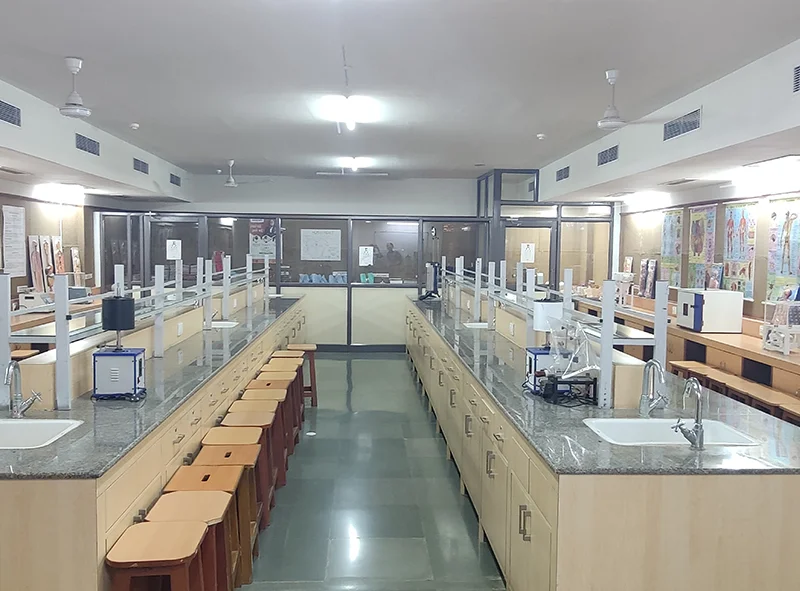

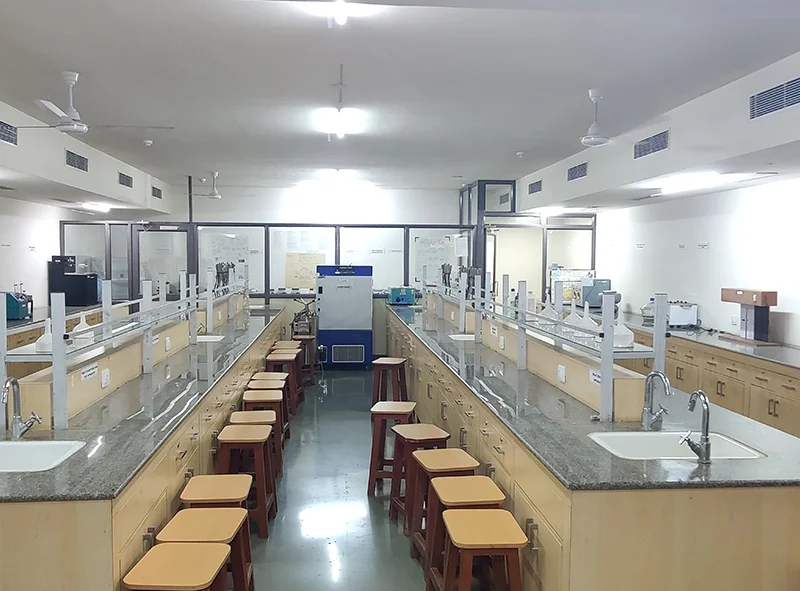
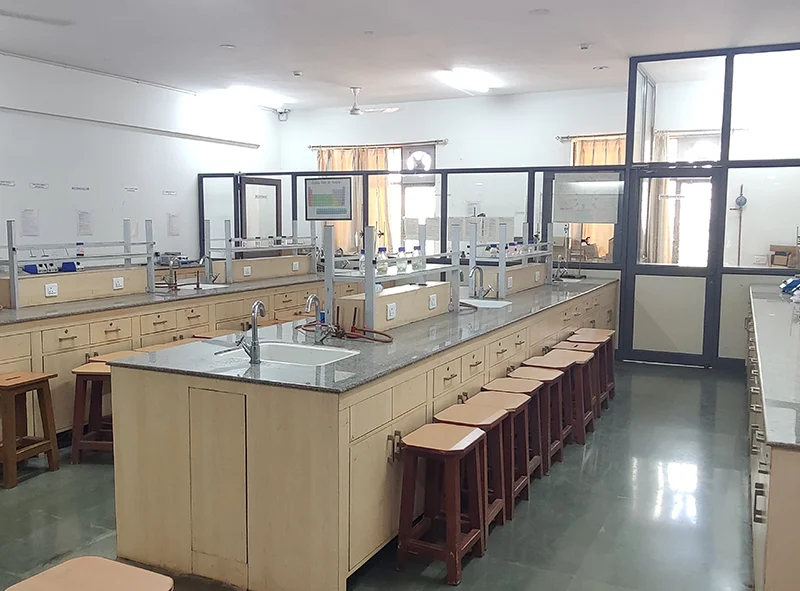
Animal House Facility
Amity University Madhya Pradesh Gwalior ’s Animal House is a state-of-the-art facility and is spread over 947.22 square feet, dedicated to animal care and behavioural studies. Our animal house facility is registered with CCSEA (2180/PO/Re/S/22/CPCSEA) for educational research purpose. The Animal Facility has a “Two-way corridor system” to reduce cross-contamination and for efficient animal house operation. Daily cleaning and disinfection of animal rooms, quarantine areas, corridors, and other areas are carried out. Full-time veterinary care is provided for the care and maintenance of animals. Biomedical waste disposal is carried out according to the guidelines. Continuous CCTV surveillance of the entire Animal facility is ensured throughout 24 hrs. The animals are well maintained under controlled environmental conditions like temperature (23+3°C), relative humidity (30-70 %), 12:12 h light and dark cycle with 100 % of fresh air exchange in animal rooms. The macro-and micro-environment around the animals are also maintained for better development of normal behaviour of animals.
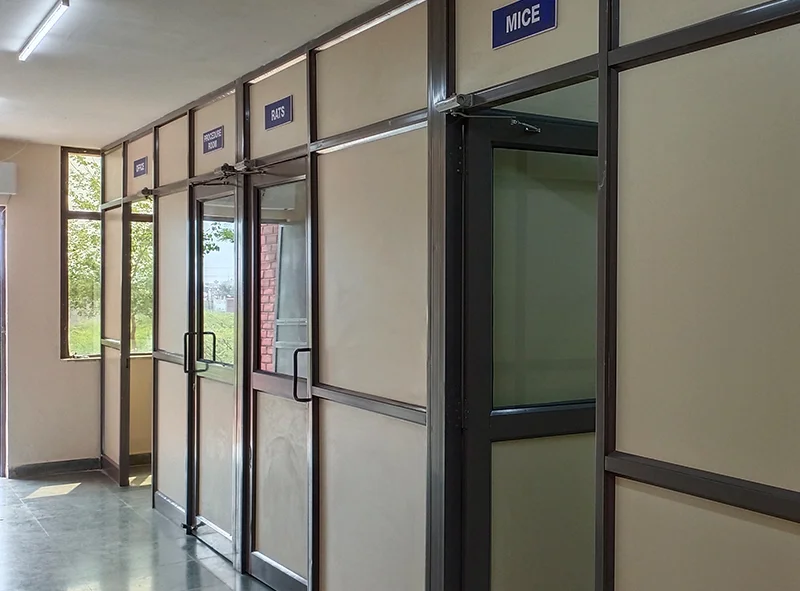
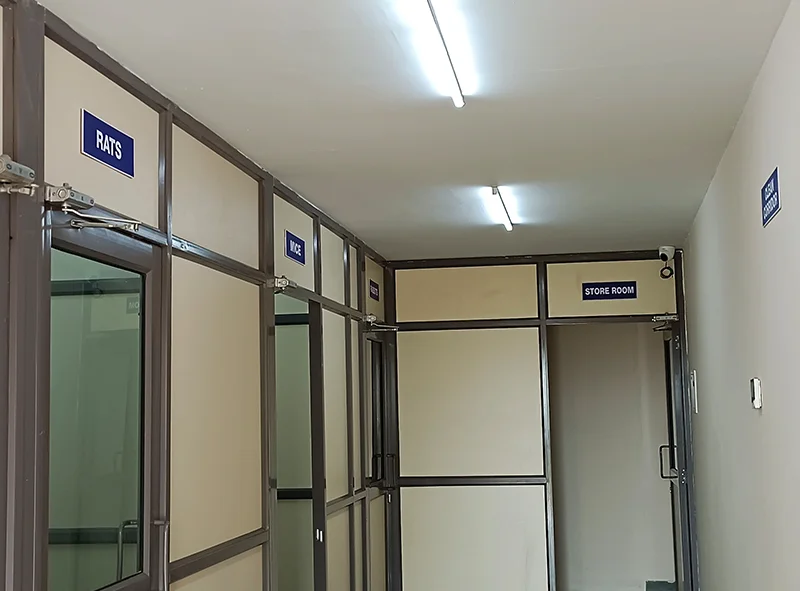


Museum
The museum of AIP is a living testament to the enduring legacy of pharmaceutical education. By preserving and showcasing the history, achievements, and cultural fabric of the Amity Institute of Pharmacy (AIP), the museum fosters a sense of pride and identity among its academic community. As a dynamic resource for learning and reflection, the museum reinforces the importance of preserving and building upon the foundations laid by past teachers and students, ensuring a bright and innovative future for pharmaceutical education. Gain insight into the vibrant student life at the pharmacy college. Photographs, memorabilia, and student projects provide a glimpse into the cultural, social, and academic experiences of students throughout their stay. This exhibit fosters a sense of continuity and community among past, present, and future generations of pharmacy students. Through its diverse exhibits, educational and interactive displays, the museum not only preserves the rich history of pharmaceutical sciences but also contributes to the ongoing narrative of innovation and progress in the field of pharmacy. The AIP museum's carefully curated exhibits and collections provide an immersive experience for students, faculty, and visitors, offering a profound understanding of the evolution of pharmacy education. A visit to AIP museum is an enriching experience that leaves visitors with a profound appreciation for the crucial role that pharmacy has played in shaping the course of healthcare throughout history.

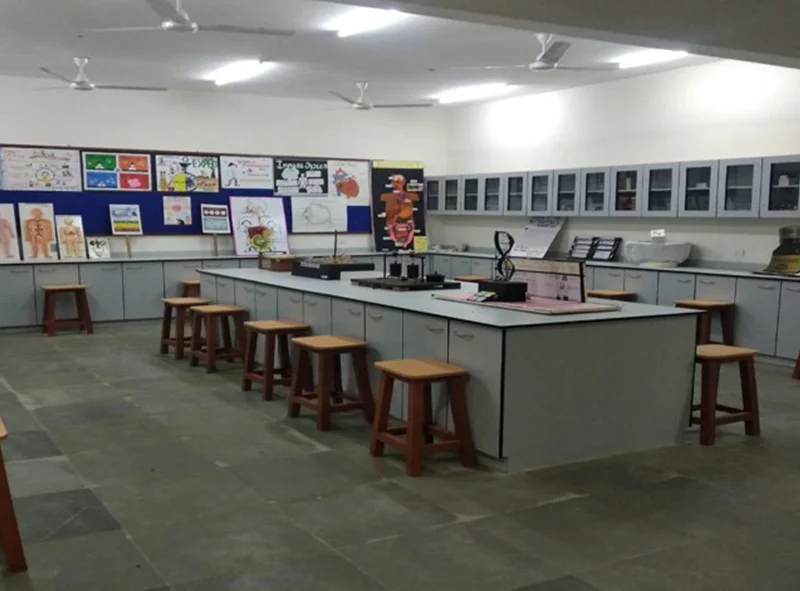
Medicinal Plant Garden
The Medicinal plant garden of the institute has a properly maintained, diverse, well documented, and scientifically identified medicinally important live plants, which is the essential component of Pharmacy education. Medicinal plants and crude drugs are the part of Pharmacy curriculum. The plants are well known in the traditional system of medicine which supports and enhances the quality of teaching and research for both faculty and students in drug discovery process. The plants are well displayed in a visually pleasing and appealing manner, labelled and organised, which promotes knowledge and interest on medicinal plants. The garden is a living laboratory for teaching natural medicine, which promotes learning for students and visitors. Specialized, well trained and dedicated staff members are available to look after the medicinal plant garden for irrigating, applying fertilizers and pesticides, weeding, planting, creating garden beds, and maintain plants. The living collection now contains over 500 species from different geographical location including vegetations of multiple habitats and ecosystem. The garden includes live plants from small herbaceous to vines to shrubs and trees, both natives and non natives. The detailed list of plants is given below. The garden emphasizes the importance of plant based remedies over centuries and their role in the contemporary medicine. The Medicinal Plant Garden will continue to improve contributions to research besides expanding efforts to develop educational programs which will promote knowledge, understanding, preservation and conservation of medicinal plants for the institution, local community, and surrounding areas.
List of Medicinal Plants

PERIWINKLE (सदाबहार)
Catharanthus Roseus, Apocynaceae
Uses: Anti-Cancer, Anti-Bacterial, Anti-Diabetic, Anti-Inflammatory, Antimicrobial, Antithrombotic, Anti-Allergic, Vasodilator, Antihypertensive, Antioxidant, Antifungal, Antibacterial and Antiviral, Memory Enhancer, Antiulcer

NEEM (नीम)
Azadirachta indica, Meliaceae
Uses: Anti-Viral, Anti-Inflammatory, Antibacterial, Antifungal, Antiarthritic, Antipyretic, Hypoglycemic, Anti-Ulcer, Antibacterial, Antitumor
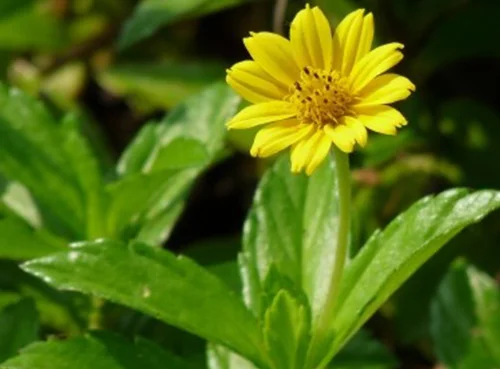
CHINESE WEDELIA (भृंगराज)
Sphagneticola calendulacea, Asteraceae
Uses: Hepatoprotective, Nephroprotective, Anti-Inflammatory, Anti-Microbial, Antioxidant, Analgesic, Antidiabetic

JAMBOLAN (जामुन)
Syzygium cumini, Myrtaceae
Uses: Astringent, Anti-Diabetic, Anti-Dysentery, Anthelmintic, Anti-Asthmatic, Antiulcer

JASMINE (चमेली)
Jasminum officinale, Oleaceae
Uses: Aphrodisiac, Spasmolytic, Cytoprotective
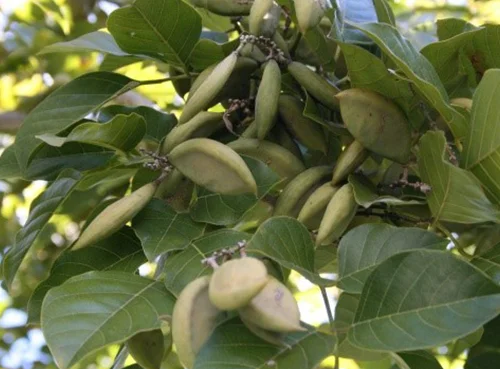
INDIAN BEECH TREE (करंज)
Pongamia Pinnata, Fabaceae
Uses:Anti-Microbial, Anti-Tumor, Anti-Inflammatory

BUTTERFLY PEA (अपराजिता)
Clitoria Ternatea, Fabaceae
Uses: Anti-Pyretic, Anti-Microbial, Anti-Inflammatory, Diuretic

CHINA ROSE (गुड़हल)
Hibiscus Rosasinensis, Malvaceae
Uses: Abortifacient, Hypoglycemic, Anti-Estrogenic

HOLY BASIL (तुलसी)
Ocimum Tenuiflorum, Lamiaceae
Uses:Anti-Microbial, Anti-Hypertensive, Anti-Cancer

CROWN FLOWER/GIANT MILK WEED (सफेद आक)
Calotropis Gigantea, Asclepiadaceae
Uses: Anti-leprotic, Anti-ulcer, Anti-diarrheal, Anti-amoebic

CURRY LEAF (मीठा नीम)
Murraya Koenigii, Rutaceae
Uses: Anti-hypertensive, Anti-hepatitis, Anti-diabetic, Anti-rheumatic
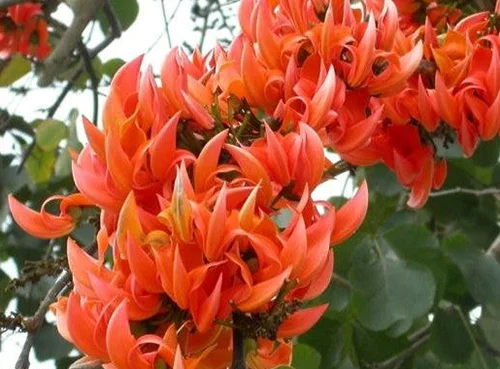
FLAME-OF-THE-FOREST (पलाश)
Butea Monosperma, Fabaceae
Uses: Anti-Bacterial, Anti-Fungal, Wound Healing, Anti-Inflammatory
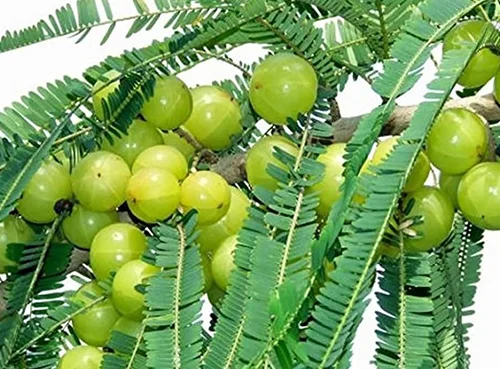
SHRUB AMLA (आँवला )
Phyllanthus polyphyllus, Phyllanthaceae
Uses: Hepatoprotective, Anti-Diabetic, Anti-Cancer, Anti-Inflammatory

HENNA (मेहंदी)
Lawsonia inermis, Lythraceae
Uses: Antimicrobial, Anti-malarial, Anti-poliomyelitis, Anti-measles

LEMON (नींबू)
Citrus Limon, Rutaceae
Uses: Hepatoprotective, Anti-Pyretic, Anti-Dysentery
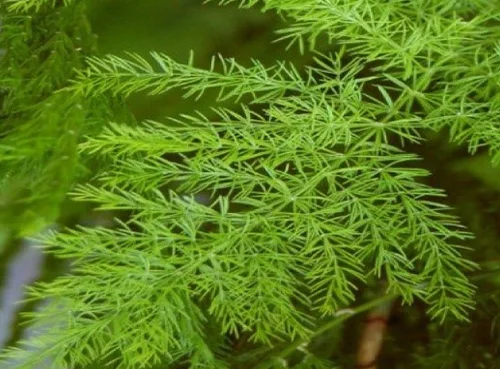
SHATAVARI (सतावर)
Asparagus racemosus, Asparagaceae
Uses: Anti-Bronchitis, Aphrodisiac, Antispasmodic, Diuretic, galactagogue

SPANISH CHERRY (मौलसरी)
Mimusops elengi, Sapotaceae
Uses: Anti-Hyperglycemic, Anti-Inflammatory, Analgesic, Wound Healing

ARJUN TREE (अर्जुन)
Terminalia arjuna, Combretaceae
Uses: Anti-Rheumatic, Hypocholesterolemic, Cardiotonic, Anti-Atherogenic, Hypotensive

BAEL FRUIT (बेल)
Aegle marmelos, Rutaceae
Uses: Astringent, Anti-Ulcer, Anti-Dysentery, Anti-Diabetic

VARIEGATED DEVILS BACKBONE(अगिया )
Euphorbia tithymaloides, Euphorbiaceae
Uses: Anti-Asthmatic, Emetic, Abortifacient, Anti-Diabetic

VELD GRAPE (हड़जोड़)
Cissus quadrangularis, Vitaceae
Uses: Anti-Osteoporotic, Anti-Ulcer, Hypercholesteremic, Anti-Arthritic
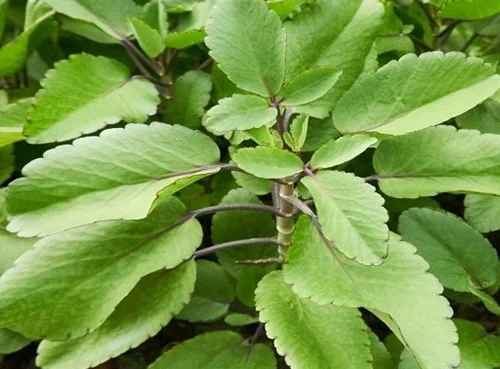
MOTHER OF MILLIONS (पत्थरचट्टा )
Kalonchoe pinnata, Crassulaceae
Uses: Anti-cancer, Anti-ulcer, Anti-depressant, Insecticidal

ALOE VERA (घृतकुमारी)
Aloe barbadensis, Asphodelaceae
Uses: Laxative, Skin Protective, Antiaging, Antiseptic

OLEANDER (कनेर)
Nerium oleander, Apocynaceae
Uses: Anti-Asthmatic, Antiepileptic, Anticancer, Antileprotic

WINTER CHERRY (अश्वगंधा)
Withania somnifera, Solanaceae
Uses: Liver Tonic, Anti-Inflammatory, Antiulcer, Sedative

DEVIL’S TREE (सप्तपर्णी)
Alstonia scholaris, Apocynaceae
Uses: Analgesic, Antimalarial, Antiulcer, Anticancer

FEANGIPANI (चंपा)
Plumeria rubra, Apocynaceae
Uses: Purgative, Antidiarrheal, Antihistaminic, Antifungal, Antitussive/Expectorant, Bronchodilator
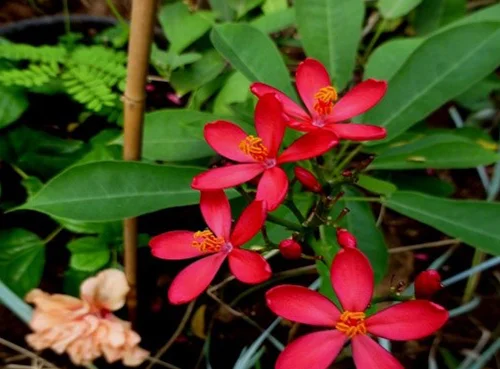
JATROPHA (रतनजोत)
Jatropha pandurifolia, Euphorbiaceae
Uses: Purgative, Anticancer, Antiviral, Antifungal, Antihistaminic, Anti Inflammatory

SMALL PEAR (अंजीर)
Ficus carica, Moraceae
Uses: Appetite Suppressant, Bronchodilator, Cardiotonic
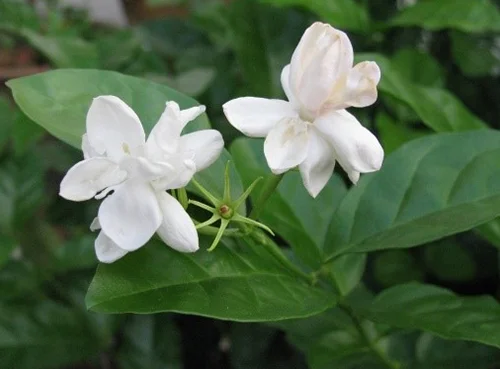
ARABIAN JASMINE (मोगरा)
Jasminum sambac, Oleaceae
Uses: Anti-Depressant, Antiseptic, Anti-Spasmodic, Galactagogue

BISHOP’S WEED (अजवाइन)
Trachyspermum ammi, Umbelliferae
Uses: Stimulant, Antispasmodic, Carminative, Antiflatulent
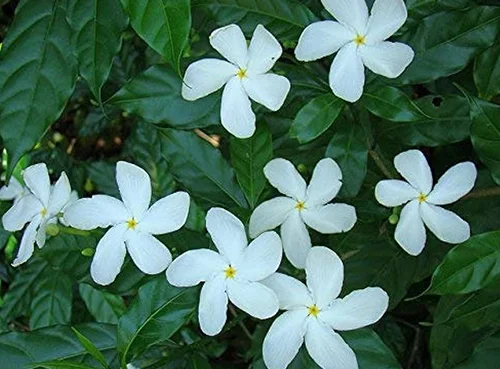
CRAPE JASMINE (चांदनी)
Tabernaemontana divaricata, Apocynaceae
Uses: Antioxidant, Antitumor, Anti-Infectives, Analgesic
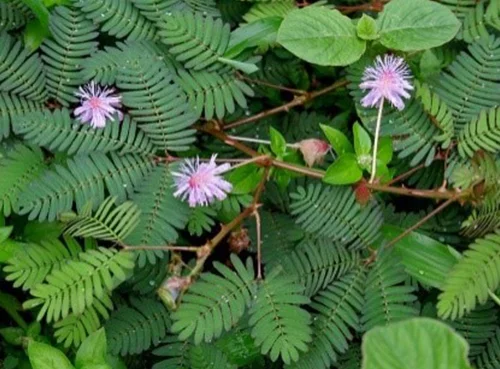
SENSITIVE PLANT (छुईमुई )
Mimosa pudica, Fabaceae
Uses: Antibacterial, Antivenom, Antifertility, Anticonvulsant

FALSE DAISY (भृंगराज )
Eclipta alba, Asteraceae
Uses: Antiulcer, Hair Tonic, Hepatoprotective

NIGHT BLOOMING JASMINE (रातरानी)
Cestrum nocturnum, Solanaceae
Uses: Antioxidant, Anti-hyperlipidemic, Hepatoprotective, Analgesic
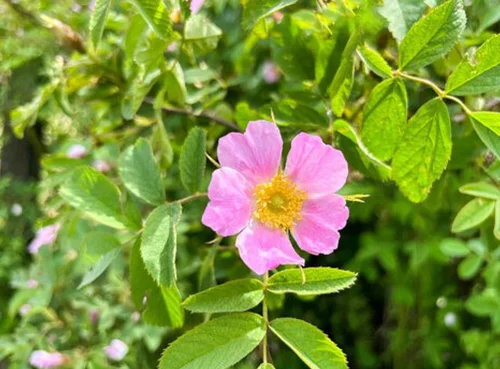
ROSE (गुलाब)
Rosa rubiginosa, Rosaceae
Uses: Rose flowers are Anti-depressant, anti-spasmodic, aphrodisiac, astringent, increase bile production, cleansing, anti- bacterial and antiseptic

HOLI BASIL (रामा तुलसी)
Ocimum tenuiflorum, Labiateae
Uses: Antiseptic, Immunostimulants, Antibacterial, Antifungal

INDIAN BAY LEAF (तेजपत्ता)
Cinnamomum tamala, Lauraceae
Uses: Anti-Diabetic, Antiarthritic, Cardiotonic, Liver Tonic

CEYLON CINNAMON (दालचीनी)
Cinnamomum zeylanicum, Lauraceae
Uses: Anti-Microbial, Anti-Parasitic, Antioxidant, Anti-Diabetic
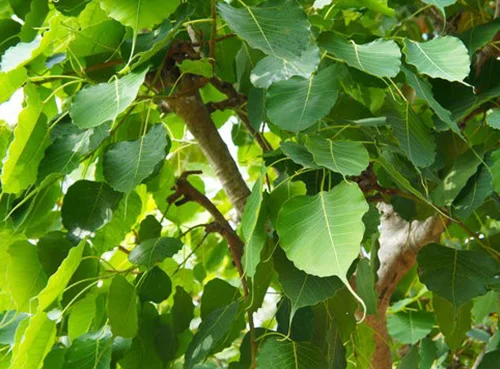
SACRED FIG (पीपल)
Ficus religios, Moraceae
Uses: Anti-Asthmatic, Antiepileptic, Antispasmodic, Carminative, Anti-Flatulent, Anti-Inflammatory

NORTH INDIAN ROSE WOOD (शीशम)
Dalbergia sissoo, Fabaceae
Uses: Anthelmintic, Antipyretic, Analgesic, Antileprotic, Antispasmodic

MANGO TREE (आम)
Mangifera indica, Anacardiaceae
Uses: Dentifrice, Antiseptic, Astringent, Diaphoretic

PAPERFLOWER (बूगनबेल )
Bougainvillea glabra, Nyctaginaceae
Uses: Anti-Diarrheal, Antacid, Bronchodilator, Antiviral, Hypotensive
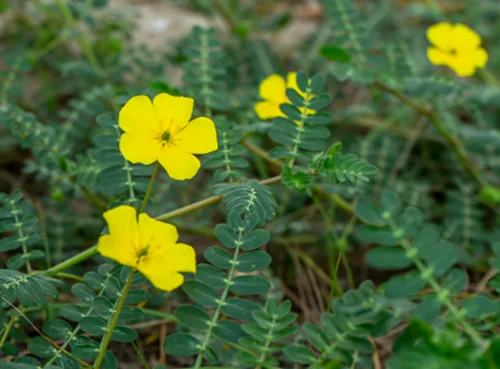
LAND-CALTROPS (छोटा गोखरू)
Tribulus terrestris, Zygophyllaceae
Uses: Diuretics, Hypotensive, Aphrodisiac, Anti-Microbial
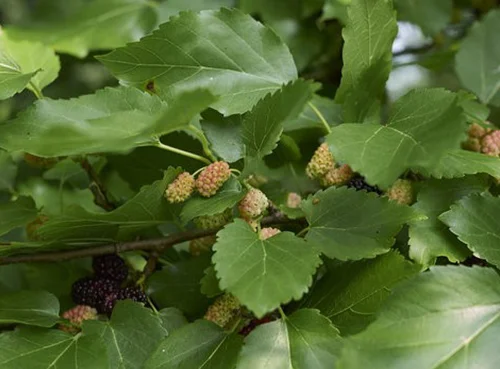
MULBERRY (शहतूत)
Morus alba , Moraceae
Uses: Antibacterial, Anti-Inflammatory, Anticancer, Memory Enhancer

HEART-LEAVED MOONSEED
Tinospora cordifolia, Menispermaceae
Uses: Anti-Diabetic, Anti-Inflammatory, Antipyretic, Hepatoprotective
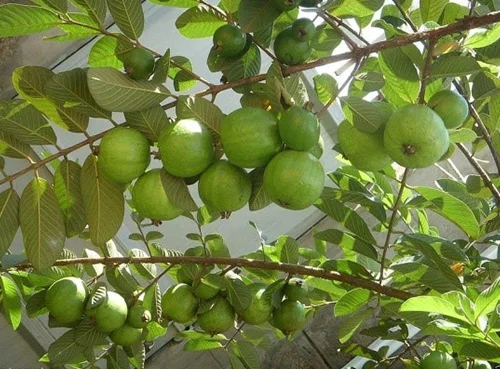
GUAVA (अमरुद)
Psidium guajava, Myrtaceae
Uses: Remedy for gastrointestinal infections such as diarrhea, dysentery, stomach aches, and indigestion

DRUMSTICK TREE (सेंजन)
Moringa oleifera, Moringaceae
Uses: Skin infections, swelling, anaemia, asthma, bronchitis, diarrhoea, headache, joint pain, rheumatism, gout, diarrhoea, heart problems, fevers, digestive disorders

INDIAN MESQUITE (शमी)
Prosopis cineraria, Fabaceae
Uses: Skin diseases, scorpion bites, bleeding disorders, and burning sensations in the eyes and face
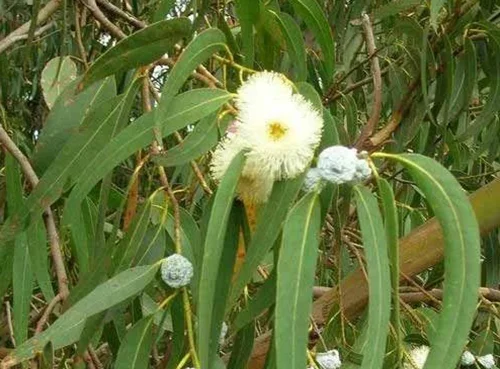
EUCALYPTUS (नीलगिरी)
Eucalyptus globulus, Myrtaceae
Uses: Relieve a sore throat, sinusitis, and bronchitis. expectorant for loosening phlegm and easing congestion.
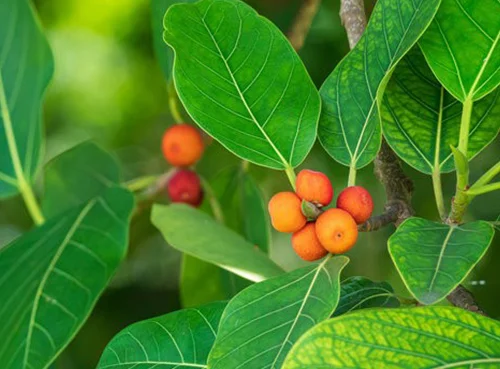
Banyan (बरगद)
Ficus benghalensis, Moraceae
Uses: Useful in burning sensation, ulcers, and painful skin diseases. It can also be used in inflammation and toothache
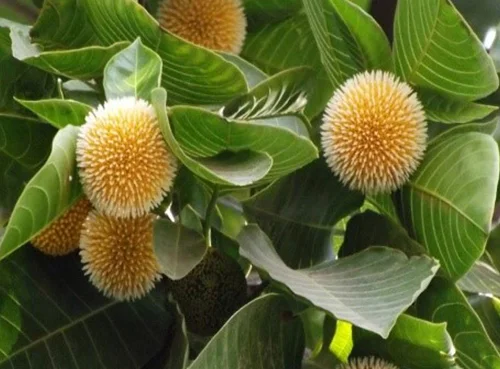
Barflower Tree (कदंब)
Anthocephalus cadamba, Rubiaceae
Uses: Mouth ulcers and inflammation of the gums, kadamba is taken in a dose of 30-40 ml to treat diarrhea and irritable bowel syndrome
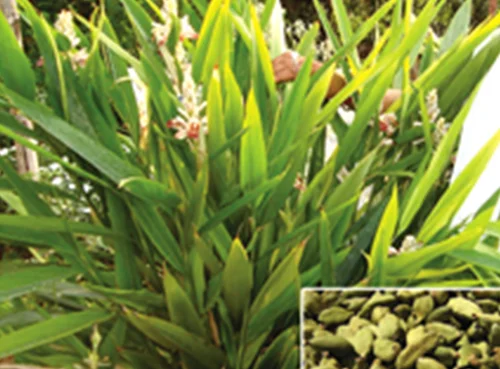
Cardamom (इलायची)
Elettaria cardamomum, Zingiberaceae
Uses: Digestive health, anti-inflammatory effects, and relieving coughs and colds. It is a great source of several essential vitamins and minerals, including vitamin C, magnesium, manganese, iron and calcium.
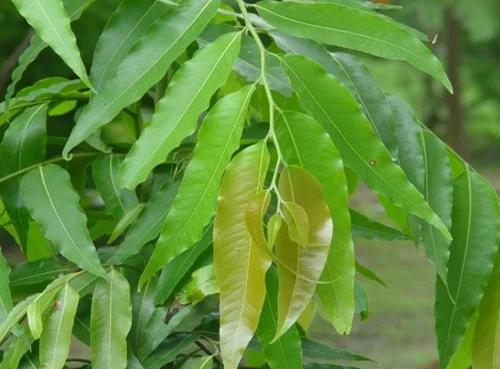
False Ashoka (अशोका)
Polyalthia longifolia, Annonaceae
Uses: Used in the treatment of fever, helminthiasis, diabetes and various cardiac problems.

Carandas Plum (करोंदा)
Carissa carandas, Apocynaceae
Uses: To treat acidity, indigestion, fresh and infected wounds, skin diseases, urinary disorders and diabetic ulcer, as well as biliousness, stomach pain, constipation, anemia, skin conditions, anorexia and insanity.

Night jasmine (हरसिंगार)
Nyctanthes arbor tristis, Oleaceae
Uses: For treating chronic fever, rheumatism, arthritis, joint pain, obstinate sciatica

Spanish Cherry (मौलसिरी)
Mimusops elengi, Sapotaceae
Uses: The bark has been used for treating diarrhea, dysentery, and fever. The leaves are believed to have antihypertensive, Anti-inflammatory and analgesic properties.

Southern Silky Oak (शाहबलूत)
Grevillea robusta, Proteaceae
Uses: Treat sore throats, earache, chest problems, flu and toothache.

Orange Jessamine (मधुकामिनी)
Murrya paniculate, Rutaceae
Uses: Used as a remedy for respiratory problems, liver disorders, diabetes and heart disease.
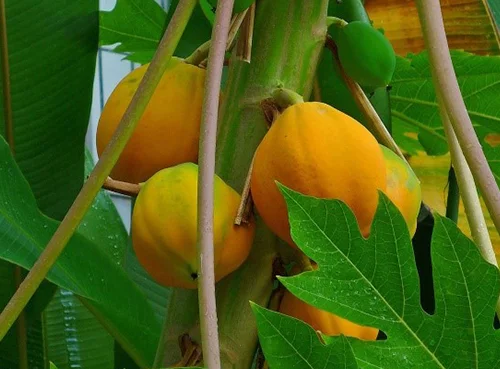
Papaya (पपीता)
Carica papaya, Caricaceae
Uses: used for preventing and treating gastrointestinal tract disorders, intestinal parasite infections, and as a sedative and diuretic. It is also used for nerve pains (neuralgia) and elephantoid growths.
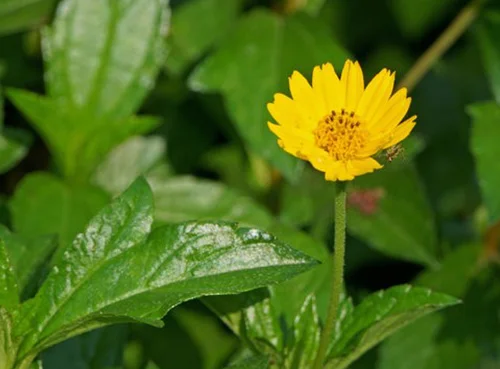
Chinese Wedelia (पीला भंगरा)
Wedelia calendulacea, Asteraceae
Uses: Treatment of kidney dysfunction, cold, wounds and amenorrhea

Gum acacia (बबूल)
Acacia senegal, Leguminoseae
Uses: Is used to mainly treat skin diseases, diabetes, bleeding disorders and intestinal worms

Gum acacia (देसी बबूल)
Acacia arabica, Leguminoseae
Uses: Is used to mainly treat skin diseases, diabetes, bleeding disorders and intestinal worms



